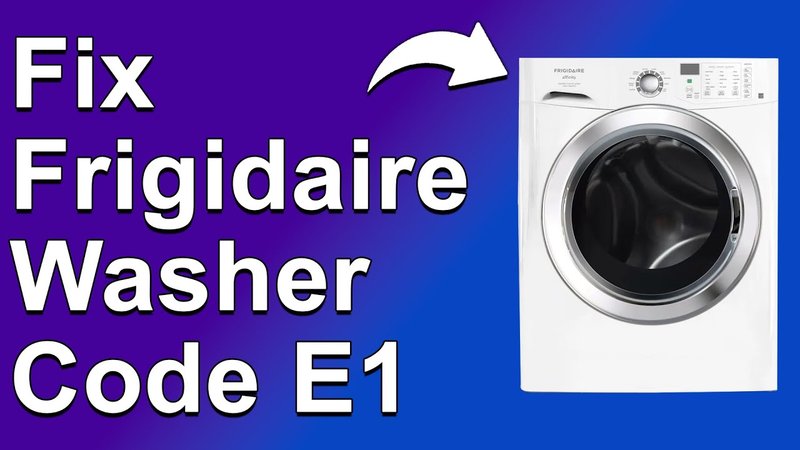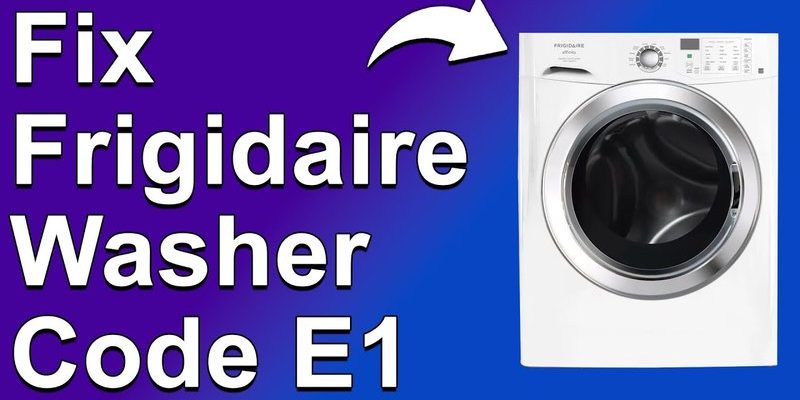
In simple terms, the E1 error code on a Frigidaire refrigerator usually indicates a problem with the temperature sensor or its associated wiring. This can happen for a variety of reasons, from a simple loose connection to more intricate failures in the sensor itself. Think of the temperature sensor as the refrigerator’s internal thermometer; it lets the appliance know if it’s keeping your food cold enough or if adjustments are needed. Like any piece of technology, it’s crucial for it to operate correctly to ensure your fridge runs smoothly and efficiently.
Understanding the E1 Error Code
So, what exactly does the E1 error code signify? In the vast world of home appliances, error codes are like secret messages. They give you clues about what’s happening inside your fridge without needing to take everything apart. An E1 code specifically points to an issue with the refrigerator’s temperature sensor circuit.
Think of the temperature sensor as the nerve endings in your fingertips. Just as your fingers relay information to your brain about how hot or cold something is, the sensor tells the fridge’s control board what’s happening inside. If the sensor’s signals get lost or confused, usually because of faulty wiring or a failed sensor, the control board can’t accurately maintain the correct temperature. This can lead to your fridge being too warm for food safety or wasting energy by running too cold.
If ignored, an E1 error can be more than just a nuisance—it might lead to spoiled food or increased energy bills as your refrigerator works harder to compensate for the inaccurate readings. So, addressing it promptly is key. Before calling a professional, there are several things you can try at home to resolve this issue and ensure it doesn’t crop up again.
Preventing Error Code E1
Here’s the deal: preventing the E1 error from haunting your Frigidaire refrigerator again is all about regular maintenance and paying attention to the small stuff. The first step is to check and ensure that your refrigerator is on a level surface. Believe it or not, an uneven floor can lead to operational issues over time, affecting the sensor’s performance indirectly.
Regularly cleaning the coils at the back or bottom of your fridge is another crucial step. These coils are like the lungs of your refrigerator, and if they’re clogged with dust and debris, it can cause the fridge to overheat and affect sensor operations. It’s a simple task but incredibly effective in maintaining the appliance’s overall health.
Next, consider the location of your refrigerator. If it’s placed in an area that gets a lot of direct sunlight or too close to a heat source like an oven, it can confuse the temperature sensor, making it work overtime. Keep your fridge in a cool, shaded spot for optimal performance. If you notice any frayed wires or loose connections, it’s essential to address these immediately to prevent the sensor from giving false readings.
Routine Checks and Maintenance
You might be wondering, how often should you check on your fridge? Regularly! Make it a habit to inspect your fridge at least once a month. This doesn’t mean you need to take it apart—just a quick visual check can do wonders. Look for any signs of wear and tear on the wiring and ensure the sensor is clean and unobstructed.
Don’t stop there; listen to your refrigerator, too. Strange noises can be an early indicator of trouble. If your fridge seems to be humming or buzzing louder than usual, it might be trying to tell you something is off, and investigating sooner rather than later can save you a lot of headaches (and money).
Lastly, consider investing in a simple, inexpensive fridge thermometer. This small tool can provide a second opinion on whether your fridge is keeping things as cool as it should be, offering peace of mind that everything is running smoothly.
When to Seek Professional Help
Sometimes, despite your best efforts, the E1 error might persist. If you’ve tried the above solutions and still see the error code glaring at you, it might be time to call in a professional. Here’s why: while DIY troubleshooting can resolve many issues, some problems require a trained technician to properly diagnose and repair.
Refrigerator technicians have the specialized tools and expertise to delve into more complex problems that might go unnoticed to the untrained eye. For instance, if the sensor itself is faulty, it might need replacement, a task best handled by someone experienced.
Think of it this way: attempting complex repairs without the right know-how can be like trying to fix a car engine with just a screwdriver—it’s usually better to trust the professionals. They’ll not only fix the problem but can also give you insightful tips on keeping your fridge in prime condition for the long haul.
Final Thoughts
Preventing the E1 error code in your Frigidaire refrigerator is mostly about being proactive and attentive. With some regular maintenance, a bit of attention to detail, and a dash of care, you can keep this pesky error at bay. Your refrigerator is a crucial part of your home, quietly working away to keep your food fresh and safe. Giving it a little TLC goes a long way in ensuring it continues to run efficiently and effectively.
Remember, the key to a healthy fridge is understanding its needs and quirks, just like any trusty old friend. By following these steps and remaining vigilant, you’ll not only prevent future errors but also extend the lifespan of your appliance. Happy refrigerating!
